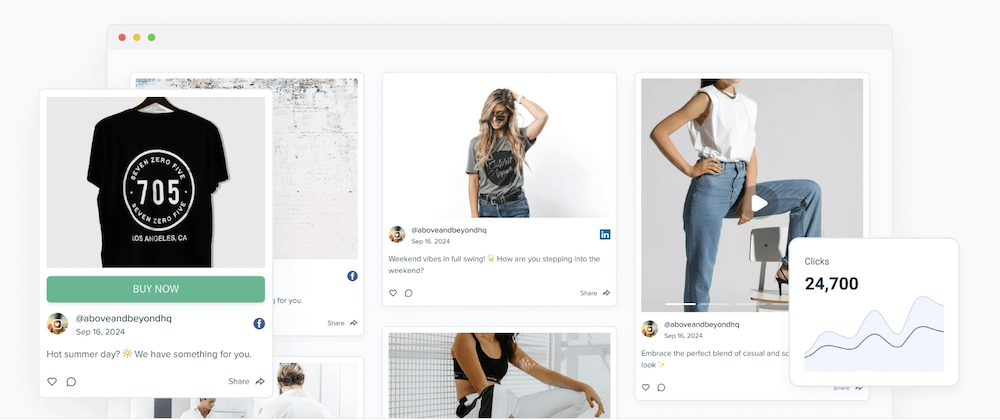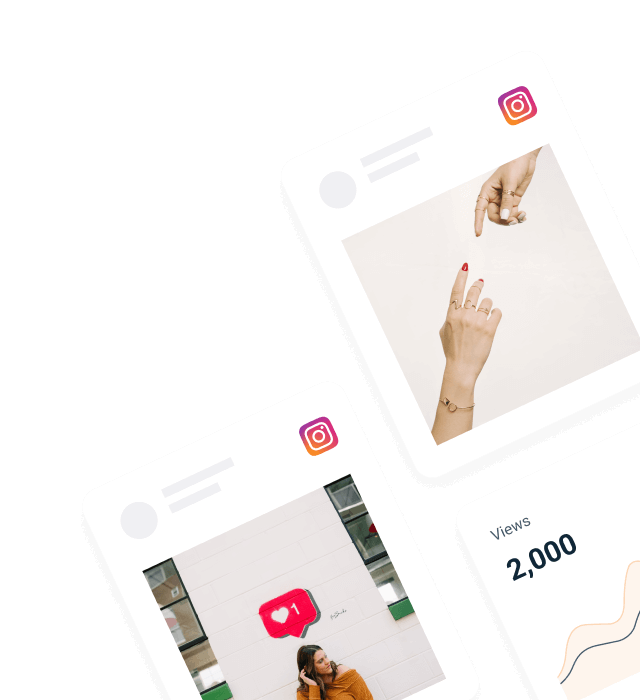Your conversion rate optimization efforts are probably missing the most obvious fix.
You’ve A/B tested button colors, headlines, and checkout flows. You’ve optimized page speed and simplified forms. But if prospective customers end up on your website and can’t immediately see that other people trust and buy from you, you’re fighting an uphill battle.
Here’s what’s really happening: customers visit your online store already skeptical. They’ve been burned by phony reviews, overhyped advertising, and products that weren’t as promised. Your polished product images and carefully crafted copy aren’t enough to overcome that skepticism anymore.
Social proof conversion isn’t about adding testimonials to your footer. It’s about strategically placing authentic customer evidence exactly where purchase doubt creeps in. And doing it in ways that feel genuine, not manufactured.
Why social proof determines conversion rates in online retail
The trust gap between discovery and purchase has never been wider, and AI isn’t enhancing it. People examine products on every social media platform, read reviews on every website, and look up hashtags for real-world use cases before even visiting your store. They must be convinced your product or service is real, is high quality, and is exactly what they are searching for. But convincing people of that in even a decent blog post isn’t enough. Even celebrity influencers don’t always cut it. People want to hear from real people, just like them.
But all too often, they land on your product pages and see the same sterile product shots every other brand uses. No evidence that real people actually buy and love your products. No proof that you’re not just another drop-shipping operation with fake testimonials. If you want to improve conversions, it’s time to get real.

The psychology behind purchase decisions
Social proof can come in many forms, but which one makes sure you truly positively impact your sales? There is no sure way; it is simply all about being authentic. That’s what will help you in earning your users’ trust.
Real social proof works because individual customers don’t want to be the first to try something risky. People don’t want to get scammed and lose their hard-earned money. They want evidence that people like them have successfully solved similar problems with your products.
This isn’t about sheep mentality—it’s about risk reduction. When someone’s spending their own money, especially on brands they don’t know well, they need reassurance that they’re making a smart choice. And you can ”use” that knowledge to increase conversions, simply by genuinely building customer trust.
“The gap between ‘I want this’ and ‘I’m buying this’ is where most sales die. Social proof bridges that gap by providing evidence that the purchase decision is safe.”
Why traditional trust signals aren’t enough anymore
Ah, the good old days. Star ratings, security badges, and company logos are used to build sufficient trust for conversions. Not anymore. Customers know these can be gamed, purchased, or fabricated.
What they trust now is messy, authentic content from real customers who had no idea anyone was watching when they posted about your product. The Instagram story where someone complained about slow shipping but loved what they received. The TikTok video where your product appears in someone’s everyday routine without any brand promotion.
The competitive advantage hiding in plain sight
Every ecommerce site has professional photography now. Clean layouts, optimized checkout flows, mobile responsiveness—it’s all table stakes. What separates brands that convert from brands that don’t is showing products being used and loved by real customers.
The difference is that most brands treat this content like decoration. They might have a social media feed buried in their footer, but they’re not leveraging social proof where it actually influences purchase decisions.
What types of social proof actually drive sales
Not all social proof converts equally. The most effective types address specific purchase concerns that arise during the buying process.
User-generated content that solves visualization problems
UGC helps customers answer “Will this work for me?” Customer photos showing products in real use, styled with other items, or used by people with similar needs provide concrete evidence.
A skincare routine video where your product appears alongside other trusted brands builds more credibility than a staged product shot of just your product. Styling posts showing your jacket worn by someone with a similar body type convert better than model photos.
The key is featuring content that helps customers visualize ownership and use, not just admire your products.
Customer testimonials that address specific objections
Generic “great product” testimonials don’t drive conversions. Testimonials that address common purchase concerns do.
“I was worried about the sizing, but the medium fit perfectly and the fabric is exactly what I expected.” This testimonial specifically addresses sizing anxiety—a major conversion killer for clothing brands.
“The setup took less than 10 minutes, and my team was using it the same day.” This addresses implementation concerns for B2B software purchases.
Real-time social proof that creates urgency
Recent purchases, current inventory levels, and live activity create natural urgency without feeling manipulative. “3 people bought this in the last hour” works because it suggests demand without being pushy.
Social media mentions happening right now prove your brand is actively loved and discussed. With tools like Juicer, you can automatically display recent customer posts about your products, showing live social proof that updates in real-time.
Influencer content that provides credible endorsement
Influencer marketing works for social proof when the endorsement feels authentic and the influencer genuinely uses your product. Micro-influencers often provide more convincing social proof than celebrities because their audiences trust their recommendations.
The most effective influencer social proof shows products being used in normal contexts, not obvious sponsored content. A fitness influencer casually wearing your activewear in a workout video provides better social proof than a posed product shot with #ad.
Expert validation that builds authority
Industry expert mentions, press coverage, and professional endorsements build credibility for higher-consideration purchases. This type of social proof works especially well for B2B products, technical tools, or premium consumer goods.
Educational background and credentials matter when experts endorse your products. A dermatologist recommending skincare carries more weight than a beauty blogger for certain audiences.
Strategic placement for maximum conversion impact {#strategic-placement}
Where you place social proof determines whether it converts browsers or just looks nice. The goal is to provide evidence exactly when purchase doubt creeps in.
Homepage above the fold—immediate trust building
Your homepage social proof needs to work for visitors who’ve never heard of your brand. Focus on broad credibility indicators: customer volume, positive reviews, and diverse customer types using your products.
Feature content that answers “Are these people legitimate?” rather than specific product benefits. Customer photos showing real people, genuine testimonials about your brand experience, and current social media mentions all work well here.
Product pages—addressing specific purchase concerns
Product page social proof should directly address common objections for that specific item. Sizing concerns, quality questions, compatibility issues—whatever typically holds customers back from clicking “add to cart.”
Customer photos showing products in use answer visualization questions. Reviews mentioning specific features address functionality concerns. UGC showing products styled or combined with other items helps customers imagine ownership.
With Juicer, you can create targeted social walls for different product categories, automatically pulling in relevant customer content based on hashtags or product mentions.
Landing pages—supporting advertising claims
Landing page social proof needs to support whatever claim brought customers to that page. If your ad promised fast results, show customer testimonials about quick outcomes. If you highlighted quality, feature content about durability, and satisfaction.
The social proof should feel like a natural continuation of your advertising message, not a disconnected add-on.
Checkout and cart pages—reducing abandonment
Cart abandonment often happens when shoppers get cold feet at the last moment. Social proof at checkout provides them with that final push of confidence that they’re making the correct choice.
Recent purchases by other customers, satisfaction guarantees, and reviews that specifically mention checkout and shipping experience all alleviate abandonment. Demonstrate to customers that others have purchased and been satisfied with the outcomes.
Email and retargeting—re-engaging hesitant customers
Use social proof in retargeting campaigns and abandoned cart emails to resolve whatever issues stopped the original purchase. Highlight customer testimonials that resolve common objections show customers being satisfied with their purchases.
Social proof in email tends to outperform discount promotions because it speaks to trust issues instead of mere price sensitivity.
Common social proof mistakes that kill conversions
Most brands make predictable mistakes when implementing social proof. Here’s what typically goes wrong and how to fix it.
Mistake 1: Fake or obviously curated testimonials
Customers can spot fake testimonials in a heartbeat. Generic praise, perfect grammar, and testimonials that sound like marketing copy erode credibility instead of building it.
The fix: Use real customer testimonials, which encompass small complaints or flaws. Real testimonials often mention small issues alongside general satisfaction, thus making them more credible.
Mistake 2: Social proof that doesn’t match your target audience
Including testimonials from customers who obviously don’t fit your target audience can negatively impact conversions. A high-end brand highlighting frugal testimonials confuses positioning.
The fix: Curate social proof from customers who look like your ideal buyer. If you sell to working professionals, feature testimonials from working professionals, not retirees or college students.
Mistake 3: Stale content that makes you look inactive
Outdated testimonials, old social media posts, and inactive social proof signals suggest your brand isn’t currently popular or successful.
The fix: Use automation tools that pull in fresh customer content regularly. Set up processes to refresh testimonials and remove outdated social proof.
Mistake 4: Overwhelming customers with too much social proof
Some brands add social proof everywhere, creating cluttered pages that distract from the primary conversion goal.
The fix: Be strategic about placement and quantity. Every social proof should have a reason for being there to resolve purchase objections.
Mistake 5: Social proof that doesn’t connect to sales
Adding social media feeds or testimonials without connecting them to purchase opportunities wastes potential conversions.
The fix: Add clear calls-to-action and product links with each piece of social proof. Make it simple for customers to take action based on the trust your social proof builds.
Implementation strategy that works
Implementing effective social proof requires more strategy than just adding customer reviews to your product pages.
Week 1: Audit existing customer content
Start by identifying what customer content you already have across social media platforms. Look for authentic testimonials, customer photos, and user-generated content that addresses common purchase concerns.
Check your hashtags, mentions, and tagged content across Instagram, TikTok, Facebook, and other platforms where your customers are active. You likely have more social proof content than you realize.
Week 2: Strategic placement planning
Map out your customer journey and identify key moments where social proof would address purchase concerns. Consider both obvious placements (product pages, checkout) and less obvious opportunities (shipping confirmations, account creation).
Plan specific types of social proof for each placement based on what concerns customers typically have at that stage.
Week 3: Technical implementation
Set up systems to collect and display social proof automatically. Tools like Juicer can pull customer content from multiple social media platforms into customizable displays that match your brand design.
Configure moderation settings to ensure quality while maintaining authenticity. You want to filter out inappropriate content without sanitizing away the realness that makes social proof effective.

Week 4: Testing and optimization
Monitor conversion rates on pages with and without social proof. Test different types of social proof to see what resonates best with your target audience.
A/B test placement, formatting, and content types. Social proof that works for one brand might not work for another, so base decisions on your own data rather than best practices from other industries.
Ongoing: Fresh content and performance monitoring
Social proof requires ongoing maintenance to stay effective. Set up processes for regularly refreshing content, responding to new customer feedback, and expanding successful social proof strategies to new areas.
Monitor key metrics monthly and adjust your approach based on what’s actually driving conversions, not just engagement.
Measuring social proof impact on revenue
Social proof success should be measured by business results, not social media metrics.
Conversion rate improvements
Track conversion rates on pages with social proof versus pages without it. This gives you clear evidence of social proof impact and helps justify continued investment.
Monitor conversion rates by traffic source to see if social proof has different effects on customers from various channels.
Revenue attribution
Calculate revenue directly attributed to social proof placements. This includes sales from customers who interacted with social proof content before purchasing.
Track average order value for customers who engage with social proof versus those who don’t. Social proof often increases purchase confidence, leading to larger orders.
Customer lifetime value impact
Customers who interact with social proof tend to be of higher lifetime value since they begin their relationship with your brand with more confidence and trust.
Track retention rates and repeat purchase behavior for customers who were exposed to social proof on their initial purchase.
Engagement quality metrics
While engagement isn’t the primary goal, quality engagement metrics help optimize social proof effectiveness:
- Time spent viewing social proof content
- Click-through rates from social proof to product pages
- Scroll depth on pages featuring social proof
- User-generated content submission rates
“Don’t measure social proof success by likes and shares. Measure it by sales and customer lifetime value. Social proof is a conversion tool, not a content marketing strategy.”
Focus on metrics that directly connect to revenue and business growth rather than vanity metrics that don’t impact your bottom line.
Stop letting social proof go to waste
Your customers are already creating the social proof you need. They’re posting reviews, sharing photos, and recommending your products to their networks. The question isn’t whether you have enough social proof content—it’s whether you’re using that content where it can actually influence purchase decisions.
Social proof conversion requires strategic implementation, not just good customer content. Place authentic customer evidence exactly where purchase doubt occurs, make it easy for convinced customers to act on that confidence, and measure impact by revenue results rather than engagement metrics.
Stop treating social proof like website decoration. Start treating it like the conversion optimization tool it actually is.
Ready to turn your happy customers’ content into conversion drivers? Tools like Juicer make it easy to collect authentic social proof and place it strategically throughout your customer journey to make a positive impact on your business.




